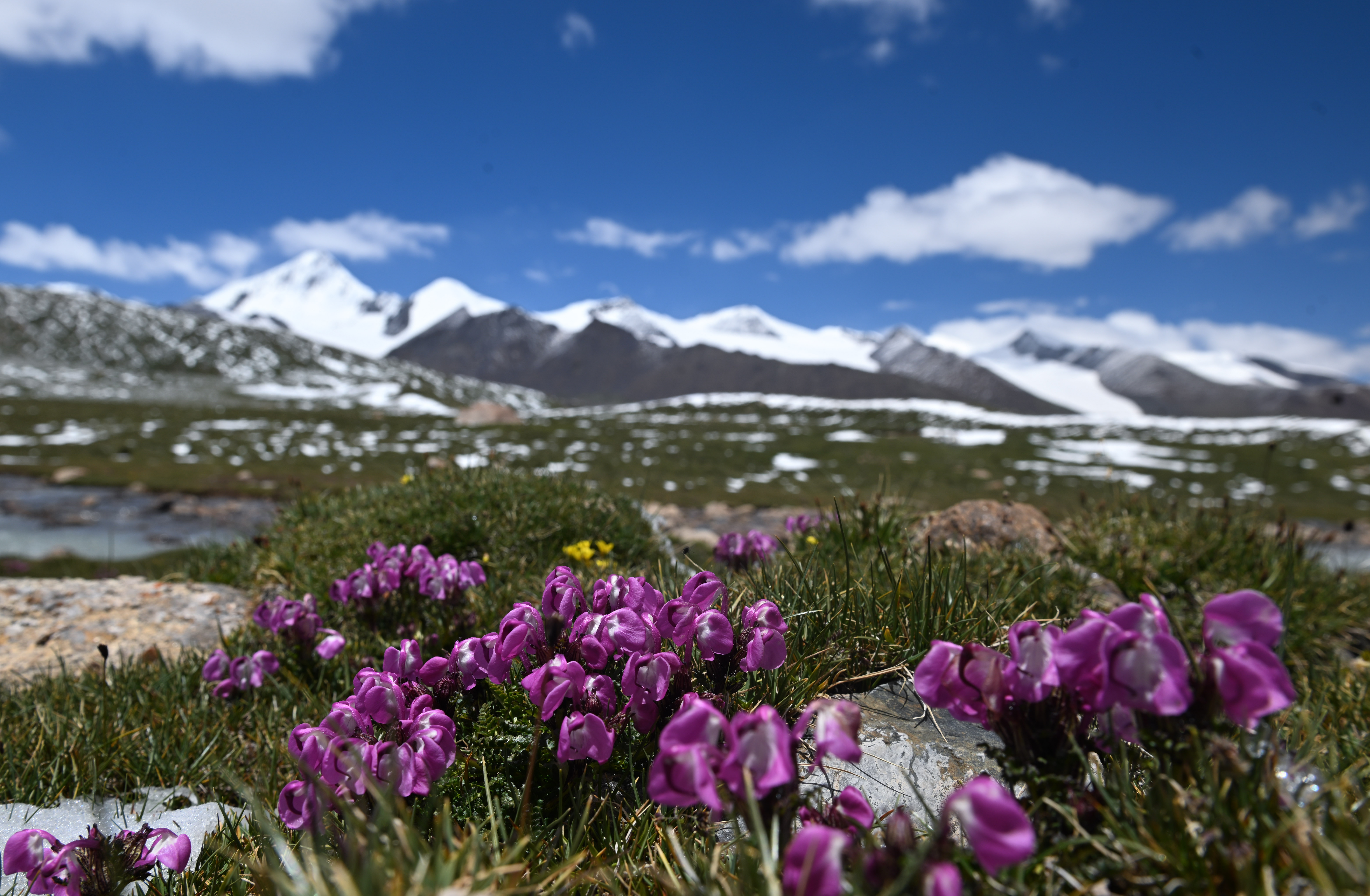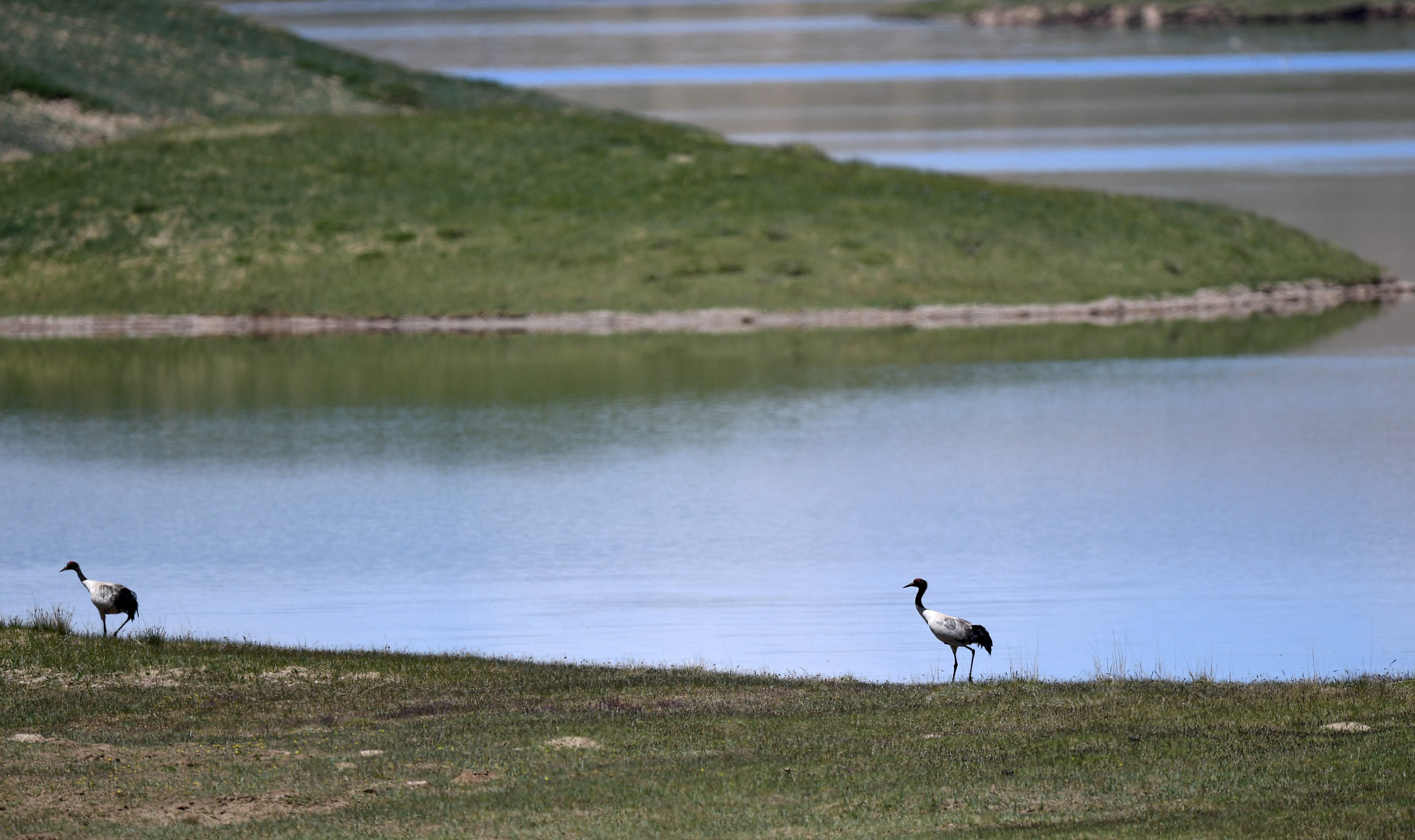Sci-tech Improves Qinghai-Xizang Plateau Ecosystem
The Gladandong Snow Mountain, located at the source area of the Yangtze River, Qinghai-Xizang Plateau. (PHOTO: XINHUA)
By WANG Xiaoxia
The Qinghai -Xizang Plateau (QXP) and its surrounding mountains, often termed the Third Pole, are home to more than 1,500 lakes and contain the headwaters of numerous major rivers in Asia. As the natural habitat of rare wild animals and the gene bank for plateau species, the plateau is an important ecological security barrier for China and even Asia at large.
The first comprehensive expedition to the QXP under the Chinese Academy of Sciences (CAS) was launched in 1973, pioneering future large -scale scientific expeditions to the plateau. It was also the first systematic scientific expedition to the plateau in human history.
Since then, scientific research on the plateau has developed from partial, single-subject, domestic research to integrated, comprehensive research involving international cooperation. Scientists' highland research has played a supporting role in the region's environmental improvement.
Scientific research unveils mysteries
So, just how did the plateau ecosystem and biodiversity evolve, and how does climate change affect its ecological security? These are some of the questions concerning the conservation of plateau ecological safety barrier and biodiversity. Nowadays, we are getting closer to the answers.
To monitor eco -environmental changes on the plateau, China has set up a relatively complete monitoring network, offering long -term located monitoring of changes of the plateau ecosystem and thus revealing laws for and causes of changes in the ecosystem and environmental factors.
During the second comprehensive scientific expedition to the plateau, Chinese scientists revised the uplift chronology of the Lunpola Basin in central QXP. Paleontologists have determined that subtropical forests once existed on the high-altitude plateau about 47 million years ago.
An international research team from the Xishuangbanna Tropical Botanical Garden and the Institute of Vertebrate Paleontology and Paleoanthropology of CAS discovered that a Shangri-La forest once occupied a deep central Tibetan valley.
Meanwhile, China's "Jimu -1" No.3 airship reached an altitude of 9,032 meters on May 15, 2022 over Mount Qomolangma, breaking the world record for airship atmospheric scientific observation.
This was also a world first to observe the changing characteristics of the most critical parameters, such as water vapor and greenhouse gases in the Mount Qomolangma region and over the mountain, which will provide scientific support for the global response to climate change, said Yao Tandong, researcher from CAS.
Black-necked cranes seen in Sanjiangyuan region, known as the source of the headwaters of the Yangtze, Yellow, and Lancang rivers. (PHOTO: XINHUA)
Eco-system restored
With China's efforts in scientific observation, artificial breeding and nature reserve construction, the plateau has witnessed development of a healthier eco-system and the repopulation of various wild species.
Sci-tech has played a strong supporting role in controlling the ecosystem degradation of the Sanjiangyuan region, known as the source of China's two largest rivers, the Yangtze River and Yellow River.
A technical system for restoring degraded alpine meadows has made big breakthroughs in relevant research, winning a Class-II prize in the National Award for Scientific and Technological Progress. A technique for cultivating breeder seeds of forage grass has also provided high-quality seeds for controlling typical degraded pastures and artificial grass planting.
Biodiversity progress
There are 155 nature reserves established in the QXP, accounting for 57.56 percent of China's total land nature reserves, roughly covering all the unique and fragile ecosystem and rare species of the plateau.
Compared with that of the mid 1990s, the population of Tibetan antelopes has risen from 50,000-70,000 to more than 200,000, while the population of black-necked cranes has increased from 1,000-3,000 to about 7,000. The valley along the middle section of the Yarlung Zangbo River and the Zoergai Grassland have become the world's largest wintering ground for the world's only alpine crane species.
Tibetan red deer, which was deemed extinct internationally in the early 1990s, has been rediscovered by Chinese scientists during expedition. With nature reserve established, its population has increased to about 800.
The population of snow leopards, wild yaks, Yunnan snub-nosed monkeys and other animals has is on the rebound. The existence of snow leopards, as the QXP ecosystem's flagship species, could indicate how healthy the local ecosystem is.
"Some local residents over 60 years old said they had heard of snow leopards, but no one had ever seen them," said Zhao Changhong, director of Beishan Forest Farm in Qinghai province, where snow leopards have been repeatedly captured by infrared cameras since September 30, 2020.




